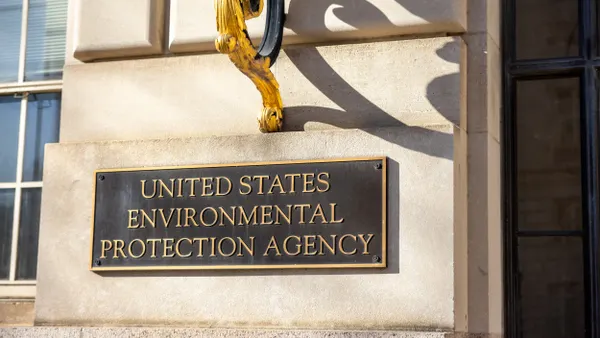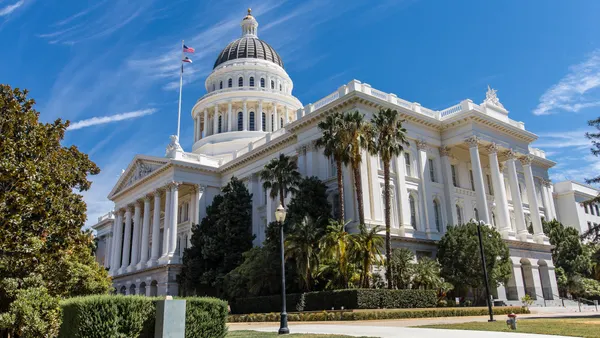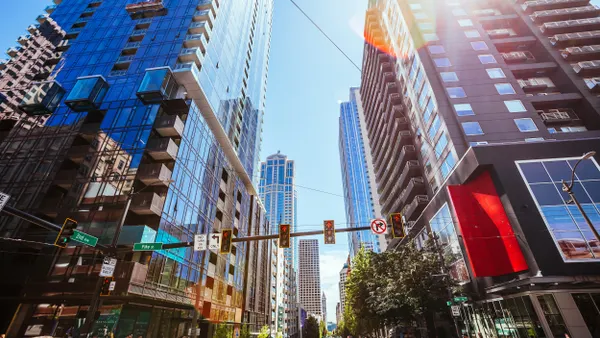The race is on. Last year, the U.N. Intergovernmental Panel on Climate Change declared that the world has just over 10 years to keep temperatures from rising above 1.5 degrees Celsius.
Since then, many global leaders have mobilized to reduce greenhouse gas emissions (GHG) with a new sense of urgency. But despite the efforts to curb the effects of climate change, many urban areas are still projected to experience drastic impacts such as rising sea levels and sweltering summers.
From New York to San Jose, CA, we looked at the projected climate changes for 10 U.S. cities in the year 2080, based on data from a report published in the journal Nature Communications. Want to know how your city's climate might feel in 2080? Explore Nature Communication's interactive map here.
Akron, OH to feel like Sikeston, MO
At current high emission rates, Akron, OH's 2080 climate would feel more like Sikeston, MO. An average Sikeston summer is 8 degrees Fahrenheit warmer than an Akron summer.
If policies are put in place to limit emissions, Akron's 2080 climate would be closer to Woodbridge, NJ. The average summer in Woodbridge is 2.8 degrees Fahrenheit warmer than an Akron summer.
New York to feel like Jonesboro, AR
At current high emission rates, New York's 2080 climate would feel more like Jonesboro, AR, which has summers that are 9.1 degrees Fahrenheit warmer and 20.8% drier than New York summers.
If emissions are limited, New York would feel like Lake Shore, MD, which is 4.5 degrees Fahrenheit warmer than New York in the summer.
Seattle to feel like Milwaukie, OR
At current high emission rates, Seattle's climate would feel like more Milwaukie, OR, which is 5.4 degrees degrees Fahrenheit warmer and 22.5% drier than Seattle summers.
If emissions are limited, Seattle's 2080 climate would feel more like Portland, which is 4.6 degrees Fahrenheit warmer and 23.4% drier than Seattle in the summer.
Denver to feel like Borger, TX
At current high emission rates, Denver's climate would feel more like Borger, TX, which is 9.1 degrees Fahrenheit warmer and 39.4% wetter than Denver in the summer.
If emissions are limited, the climate would resemble Dumas, TX, which is 6 degrees Fahrenheit warmer and 30.6% wetter than Denver summers.
Chicago to feel like Lansing, KS
At current high emission rates, Chicago would feel like Lansing, KS, which is 5.7 degrees Fahrenheit warmer and 13.5% wetter than a Chicago summer.
If emissions are limited, Chicago's climate would like more like Shiloh, OH which is 2.4 degrees Fahrenheit warmer and 8.6% drier than Chicago in the summer.
Atlanta to feel like Saraland, AL
At current high emission rates, Atlanta's climate would feel more like Saraland, AL, which is 3.1 degrees Fahrenheit warmer and 49.7% wetter than summer in Atlanta.
If emissions are limited, Atlanta's climate will feel like Selma, AL, which is 4.1 degrees Fahrenheit warmer and 2.3% drier than summer in Atlanta.
Albuquerque, NM to feel like Socorro, TX
At current emission rates, Albuquerque, NM's summer in 2080 would be like Socorro, TX, which is 8.5 degrees Fahrenheit warmer than an Albuquerque summer.
If emissions are limited, Albuquerque would feel like Hurricane, UT, which is 6.5 degrees Fahrenheit warmer and 36.5% drier than Albuquerque summers.
Houston to feel like Ciudad Mante, Mexico
At current high emission rates, the Houston would feel more like Ciudad Mante, Mexico, which is 4.1 degrees Fahrenheit warmer and 27.1% wetter than a Houston summer.
If emissions are limited, Houston's climate would feel like Kingsville, TX, which is 2.4 degrees Fahrenheit warmer and 36.2% drier than summer in Houston.
Alexandria, LA to feel like Ciudad Gustavo Díaz Ordaz, Mexico
At current emission rates, Alexandria, LA's climate would feel more like Ciudad Gustavo Díaz Ordaz, Mexico, which is 6.6 degrees Fahrenheit warmer and 40.4% drier than a normal summer in Alexandria.
If emissions are limited, Alexandria’s winter will feel more like Baylor, TX, which is about 0.6 degrees Fahrenheit warmer and 9.3% wetter than an Alexandria summer.
San Jose, CA to feel like Glendale, CA
At current high emission rates, San Jose, CA’s climate will feel more like Glendale, CA, which has a summer that is 3.3 degrees Fahrenheit warmer than San Jose's and 24.8% drier.
If emissions are limited, San Jose's climate will be more like Rancho San Diego, CA, which is typically 3.9 degrees Fahrenheit warmer than San Jose in the summer.
CORRECTION: The story has been updated to reflect that Jonesboro is located in Arkansas.










